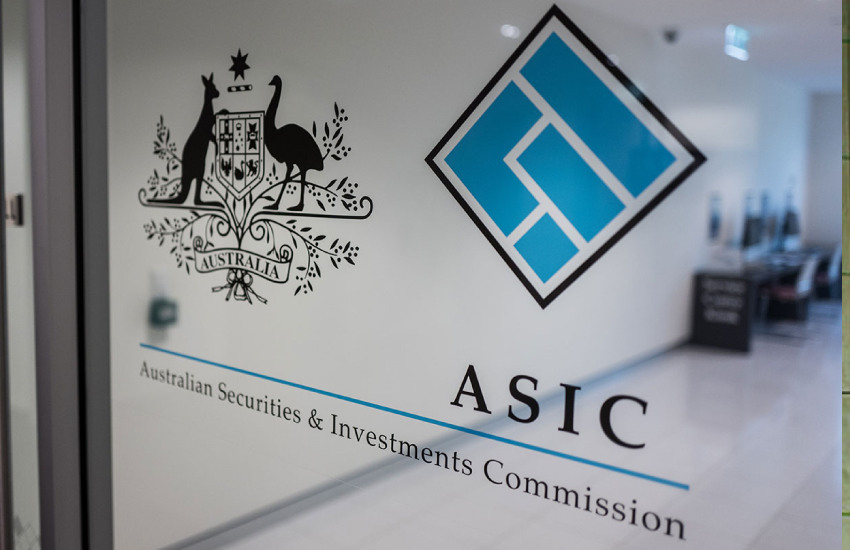Transfer balance account reporting has been one of the most contentious and divisive issues for the industry in the past year. The ATO initially proposed that all SMSFs would report credit and debit amounts for the transfer balance cap no more than 10 days after the month in which they occurred, and the commencement of income streams no more than 28 days after the end of the quarter in which they were commenced.
These proposals were soon met with intense criticism and lobbying from parts of the SMSF industry, with many firms ill-equipped to deal with the frequency of the proposed time frames.
Following the negative reaction from industry, the ATO revised its position, adjusting the reporting time frame for all events to a quarterly basis, and limiting the new reporting requirements to members with account balances of at least $1 million only.
This means that from 1 July 2018, SMSFs that have members with a total superannuation balance of $1 million or more will be required to report events impacting a member’s transfer balance cap within 28 days after the end of the quarter in which the event occurs.
At time of writing, the ATO has suggested that the $1 million threshold amount will be based on the total superannuation balance of the member on the 30 June immediately prior to the commencement of that income stream. ATO assistant commissioner Kasey Macfarlane says the ATO is also proposing that in situations where one SMSF member has a total super balance greater than $1 million and others in the fund have a total super balance less than $1 million, “the SMSF will report all events for all members 28 days after the end of the relevant quarter”.
“We think its appropriate to apply it at the fund level like that, to avoid administrative complexities of SMSFs and their advisers having to work out different methods and different reporting time frames,” explains Ms Macfarlane. She also stresses that where a member’s superannuation balance falls below the $1 million threshold during a financial year and they were previously above it, they will not be able to switch to annual reporting in that year.
“That approach is being taken to avoid administrative complexity of people going in and out of annual and quarterly reporting, creating difficulty for advisers and administrators,” she says.
IMPLICATIONS OF THE NEW REPORTING
The TBAR reporting regime will affect some SMSFs significantly depending on the size of member balances and the strategies employed, while other SMSFs will see very little impact at all. Despite the extension to the time frames in which funds need to report, quarterly reporting still represents a significant transition from the current rules, where transactions can be reported nearly two years after they occur.
The introduction of the superannuation reforms is likely to lead to an increase in SMSF pensioners who draw more than their required minimum performing additional commutations to maintain room under their $1.6 million cap for extra contributions. Class chief executive Kevin Bungard explains that these additional commutations would of course be reportable events for those members with balances exceeding $1 million. This is likely to become a popular strategy, he says, because it enables clients to add more space back onto their transfer balance cap.
“If it’s a material amount [above the minimum pension], you would look to make sure that you get the credit back onto your cap, so that the client has that additional cap space later on,” he says.
Analysis by Class indicates that around 39 per cent of pensioners drew down at least $5,000 more than the minimum on their pensions during the 2016 financial year.
SMSF Academy director Aaron Dunn agrees that this will be an important strategy from 1 July, but says SMSF practitioners will need to contemplate the timing of when information about these commutations needs to be reported to the ATO.
Another strategy which could attract a higher rate of reportable events is rebalancing the balances between different members in a fund, explains Mr Bungard.
“SMSF members may choose to even up the balances between different members in a fund by taking money out and re-contributing it to the other member and then restarting the pension,” he explains.
“That’s a strategy that’s going to require a level of reporting, especially when you consider that given the caps, it would potentially take someone a number of years to execute that kind of strategy to try and even out the balances.”
One of the other main implications of event-based reporting is that it’s going to be much more difficult to backdate strategies and documents, warns BGL Corporate Solutions managing director Ron Lesh.
“In the past, SMSF practitioners might have backdated the commencement of pensions by 12 months and if they didn’t have to pull any cash out, then that wasn’t a problem,” Mr Lesh explains.
“So they’ll now need to make those types of decisions earlier. So, instead of sitting down at the end of the year, and saying ‘okay, we should have started a pension at the beginning of July, so let’s do that’, they’ll have to report it for the quarter that they started the pension.”

Colonial First State executive manager Craig Day says this inability to backdate documents as a result of the reporting needs to be carefully considered where SMSF practitioners are executing strategies that involve commuting amounts that were paid above the pension minimum.
“You need to actively commute an amount out of your income stream. So you won’t be able to wait until the end of the financial year, and then look at the total amount you had withdrawn from your income stream and then decide that any amounts over and above the minimum will be treated as lump sums,” he cautions.
“You need to be proactive about that and decide that was what you were going to do at the beginning of year.”
If SMSF advisers do decide to recommend a commutation, he says, then they need to get the paperwork and documentation for it sorted upfront.
“It’s not something that should be done in retrospect at the end of the financial year.”
GEARING UP FOR THE REPORTING
For some SMSF firms, particularly those that are still processing client funds manually preparing for the event-based reporting regime may require moving to new SMSF administration software systems and updating their technology.
Mr Lesh says SMSF firms will need to automate the process of collecting SMSF data.
“Those that are using web-based software will find complying with the requirements a lot easier, those that are not using web-based software will find it a lot harder, and those using no software will find it impossible,” Mr Lesh warns.
A large chunk of SMSF firms, he says, are still only using desktop software rather than cloud-based software, which means they don’t have access to up-to-date information on investments and account balances for their client. He also estimates there could be as many as 100,000 SMSFs that still aren’t using any software at all.
SuperConcepts general manager of technical services and education Peter Burgess says there are already software tools out there that support event-based reporting. These tools generate data files on events for multiple members, which can be uploaded to either the business portal or the tax agent portal.
“So there is an automated solution to this and it’s within the reach of SMSF trustees.”
“Practitioners should look at the automated solutions which are now available because it does make the reporting so much easier,” says Mr Burgess.
One of the most important preparations for the new reporting requirements is educating clients on the details, according to the SMSF Academy’s Aaron Dunn. SMSF firms, he says, either need to put the information about the fund into the hands of the member through cloud-based technology, for example, or there needs to be a communication system in place between the client and the practitioner around when certain money is being moved.
“Those communication pieces are going to become critical, otherwise it does put the member or fund at risk of not reporting within the prescribed time frames,” he says.
The new reporting requirements will also place greater emphasis on client segmentation. Mr Dunn recommends splitting clients into three separate groups; clients with balances above $1 million, those with balances close to $1 million and those that are well below $1 million.
“For the clients above the $1 million, practitioners may need to be more strategy-focused in terms of how those benefits may be taken out if they’re contemplating partial commutations and so forth, versus those under the $1 million.”
SMSF practitioners should then look at clients in the threshold risk area.

“It’s going to be based on the total superannuation balance each year so these clients may slide in and out of the system so you’re going to need to be active in terms of the management of those [funds],” he explains.
The third group, he says, will comprise of the lower risk clients who are unlikely to ever reach the $1 million. SMSF practitioners, he stresses, will still need to think about the fact that these clients may exceed the threshold for quarterly reporting upon receiving a death benefit, however.
TRAPS TO WATCH OUT FOR
While the ATO’s revised position on event-based reporting may have been a welcome relief to the industry, it also means that SMSFs are now out of step with the rest of the superannuation sector. This misalignment means there is the potential for excess transfer balance determinations to be issued by the ATO, warns Mr Burgess.
“So whenever an SMSF member that’s in the pension phase commutes that pension, rolls it over and starts a pension in an APRA regulated fund, there is the likelihood of an incorrect excess transfer balance determination being issued by the ATO,” he cautions.
“That’s because the pension balance at 1 July 2017 would be a credit to the member’s transfer balance account for that amount, and then they transfer it to the APRA fund and the APRA fund has to report the commencement of that pension 10 business days after the end of the month.”
The client would therefore end up with two credits for the pension in their transfer balance account which could then result in an excess pension amount and a determination being issued, he says, because the commutation has not yet been reported by the SMSF.
“Now once that determination has been issued by the ATO, the clock is ticking, and if the member doesn’t act on that determination in a timely manner, the APRA fund will be compelled to commute that excess, even though there isn’t really an excess, and so that can create some legwork and extra stress for the client,” he says.
At a minimum, he recommends that SMSF practitioners report any full commutations 10 business days after the end of the month like APRA funds do, in order to avoid this issue arising.
Mr Day says SMSF practitioners should ideally be recording pension commencements and commutations for their clients on an ongoing basis. ATO data can potentially be out-of-date by 22-and-a-half months for clients reporting on an annual basis so it won’t be reliable, he warns. Advisers who aren’t recording this information could therefore be caught off guard where a client receives a death benefit for example.
If a client dies, their spouse may need to commute and roll back an amount of their own pension to accumulation phase, in order to create additional cap space and allow them to receive more of the original member’s death benefit as an income stream, he explains.
“Unless separate records have been maintained, it may be difficult to quickly calculate the value of the commutation required, especially where the client has been commuting additional lump sums from their own pension, which could delay the payment of a death benefit and increase the risk of exceeding their TBC,” says Mr Day.
In these types of scenarios, SMSF practitioners won’t be able to wait the potential 22-and-a-half months for all the reporting to wash through and know how much to commute, he cautions.
“The adviser would actually need to do that relatively quickly so they’d have to go back in and look at the fund’s records, look at all the transactions and figure out which of those withdrawals are pension payments, which were commutations, and then calculate what the actual transfer balance cap for the survivor is, which would then tell them how much to commute,” he says.
“So it could actually get reasonably complicated for a financial adviser, and there is also a time frame in relation to the payment of death benefits which they need to keep in mind as well, so all that work needs to be done reasonably quickly.”
Given that the commencement of a pension is a reportable event, Mr Bungard says practitioners will also need to monitor balances for clients that are at an age where they could potentially start a pension, even if they are still in accumulation phase.
“[So] if the client is at an age where they could start a pension this year, you will need to know what their total super balance was at the beginning of the year,” he says.
Analysis from Class suggests that around 60 per cent of SMSFs have at least one member who is age 60 or older. Class also estimates that approximately 20 per cent of SMSFs have at least one member who is age 60 or over and a member with a balance over $1 million. Mr Bungard notes that the member aged 60 or over may not be the same member with a balance of $1 million or more.
This point was also raised by Ms Macfarlane in November when she stated that it’s not just SMSF members in retirement phase who will be tested against the $1 million threshold.
“All members’ total super balances are tested against the $1 million threshold and are relevant to determine the reporting time frames that apply,” she says.
“The reason for that is it’s not just about money already in the retirement phase, it’s also about money that people hold in super which could potentially be transferred into the retirement phase in the future, and cause an inadvertent or accidental trip over the transfer balance cap.









